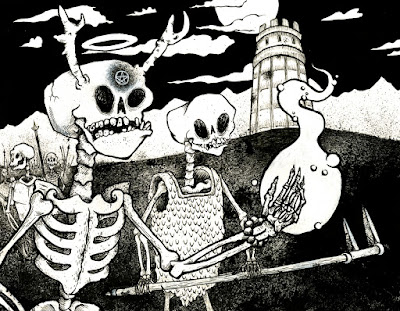The
Wendigo is a blood thirsty monster; a twisted, taunted perversion of the human
form. Just like all aspects of undeath, “wendigoism” was once thought to be the
physical incarnation of Nil, the elder god of destruction. According to legend,
upon death a willing soul could pledge its loyalty to Nil, hence forth allying
himself with Nil’s armies of destruction and therefore gaining the powers of
undeath. However, modern science has since proven that undeath is the result of
a parasitic disease, usually contracted through the consumption of human blood.
The rage and delirium commonly associated with cannibalism are most likely symptoms
caused by the early effects of “autonecrotosis”.
This
strain of undeath slowly consumes and converts the victim’s entire body. Requiring
large amounts of energy, the disease sends signals to the victim’s brain; he
becomes increasingly violent as his cravings for blood overwhelm him. After several
days of gorging himself, his “blood lust” period subsides as he falls into a
state of extreme exhaustion. This nearly comatose state of hibernation concludes
after a week or two, during which time the autonecrotosis uses the nutrition
from the stored blood to mutate the victim’s anatomy. He emerges, this time a
full-fledge Wendigo.
In
the Drae Planarum, the ancient draeicks wrote many volumes on the powers of the
wendigo. They are described as, “creatures without conscience, who kill so that
they might fill the empty void which is the absence of their humanity. The
wendigo is immune to pain, fear, and cannot be bought or intimidated. It is a
primal creature who cannot die until it is hacked into pieces and incinerated
with fire or magic. Like all undead, the wendigo will never succumb to
exhaustion; if you are ever tracked by a wendigo, it is kill or be killed.”






















